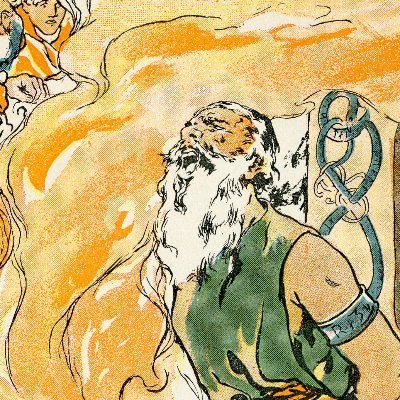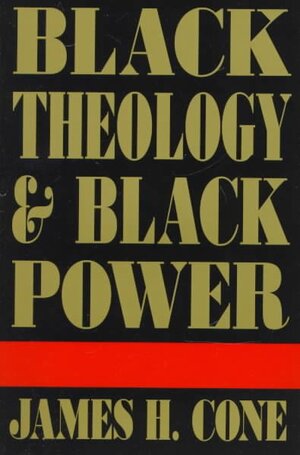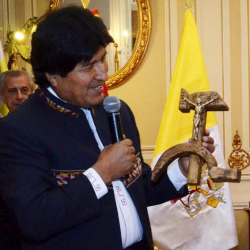The European wars of religion were a series of wars waged in Europe during the 16th, 17th and early 18th centuries. Fought after the Protestant Reformation began in 1517, the wars disrupted the religious and political order in the Catholic countries of Europe. Other motives during the wars involved revolt, territorial ambitions and great power conflicts. By the end of the Thirty Years' War (1618–1648), Catholic France had allied with the Protestant forces against the Catholic Habsburg monarchy. The wars were largely ended by the Peace of Westphalia (1648), which established a new political order that is now known as Westphalian sovereignty.
The conflicts began with the minor Knights' Revolt (1522), followed by the larger German Peasants' War (1524–1525) in the Holy Roman Empire. Warfare intensified after the Catholic Church began the Counter-Reformation in 1545 against the growth of Protestantism. The conflicts culminated in the Thirty Years' War, which devastated Germany and killed one third of its population, a mortality rate twice that of World War I.[2][4] The Peace of Westphalia broadly resolved the conflicts by recognising three separate Christian traditions in the Holy Roman Empire: Roman Catholicism, Lutheranism and Calvinism. Although many European leaders were sickened by the bloodshed by 1648, smaller religious wars continued to be waged until the 1710s, including the Wars of the Three Kingdoms (1639–1651) in the British Isles, the Savoyard–Waldensian wars (1655–1690), and the Toggenburg War (1712) in the Western Alps.
The Peace of Westphalia is the collective name for two peace treaties signed in October 1648 in the Westphalian cities of Osnabrück and Münster. They ended the Thirty Years' War (1618–1648) and brought peace to the Holy Roman Empire, closing a calamitous period of European history that killed approximately eight million people. The Holy Roman Emperor (Ferdinand III), the kingdoms of France and Sweden, and their respective allies among the princes of the Holy Roman Empire participated in these treaties.
The negotiation process was lengthy and complex. Talks took place in two cities, because each side wanted to meet on territory under its own control. A total of 109 delegations arrived to represent the belligerent states, but not all delegations were present at the same time. Two treaties were signed to end the war in the Empire: the Treaty of Münster and the Treaty of Osnabrück. These treaties ended the Thirty Years' War in the Holy Roman Empire, with the Habsburgs (rulers of Austria and Spain) and their Catholic allies on one side, battling the Protestant powers (Sweden and certain Holy Roman principalities) allied with France (though Catholic, strongly anti-Habsburg under King Louis XIV).
Megathreads and spaces to hang out:
- ❤️ Come listen to music and Watch movies with your fellow Hexbears nerd, in Cy.tube
- 💖 Come talk in the New weekly queer thread
- 🧡 Monthly Neurodiverse Megathread
- 💛 Read about a current topic in the news
- ⭐️ October Movie Nominations ⭐️
reminders:
- 💚 You nerds can join specific comms to see posts about all sorts of topics
- 💙 Hexbear’s algorithm prioritizes struggle sessions over upbears
- 💜 Sorting by new you nerd
- 🌈 If you ever want to make your own megathread, you can go here nerd
Links To Resources (Aid and Theory):
Aid:
- 💙Comprehensive list of resources for those in need of an abortion -- reddit link
- 💙Resources for Palestine
Theory:
- ❤️Foundations of Leninism
- ❤️Anarchism and Other Essays
- ❤️Mega upload with theory for many tendencies
Remember nerds, no current struggle session discussion here to the general megathread, i will ban you from the comm and remove your comment, have a good day/night :meow-coffee:
yeah what the fuck is up with that
human brains make sense challenge (impossible)
Cw rant about the Christian DSA thing
spoiler
So aparently some DSA committee authorized a Christian minister to administer a prayer before one of their meetings and there was pushback from non-Christians and the minister dropped out. Now a bunch of Christians are throwing a tantrum on twitter saying that anyone who doesn't accept a public prayer cannot organize in America... and im just so amazed as to how so many Christians can go their whole lives being so painfully un-self-aware or the slightest bit critical of their own actions.
Like, they keep calling it an inclusive "non-denominational prayer"? There is no such thing as a non-denominational prayer, especially one given by a christian. A core belief of Christianity is that God/Christ is the only true god. So any prayer given by a christian must be to their god, which excludes any other faith. Maybe you can get some wiggle room and simply not mention Christ by name so the prayer doesnt directly contradict Judaism or Islam, but its still being given by a christian. It has to exclude every religious person who isnt a member of an Abrahamic faith and every atheist, so how could it ever be "inclusive"?
It really speaks to the chauvenism built into the faith that a lot of Christians refuse to unlearn. This idea that they should be allowed to use a secular organization as a platform to subject non-Christians to their religious rituals under the guise of it being "inclusive". Its fuckign wierd and gross. Imagine if I, a Norse Pagan, was given the floor at the beginning of a socialist organization's meeting to make a public sacrifice to Oðinn or Thor. That would make a shit ton of people extremely uncomfortable! Especially given the use of Norse symbols by fascists it would be unthinkable for me to force my faith upon other people. But there's absolutely no self reflection by these Christians as to why people might be uncomfortable with being inckuded in their religion's rituals.
I mean no disrespect to anyone here who might be Christian, I know yall probably think this shits cringe to, I just needed to write down my thoughts.
i absolutely agree that offering prayer at a DSA meeting is not the place for it, but just to add some religious context here: interfaith prayer meetings are very common among ecumenical groups and it is very common to have wiccans, muslims, jews, and christians all offer various bits of prayer to whoever or whatever they want in these meetings, and it's fine in that environment. but yeah, it's not appropriate for a DSA meeting, and i have no idea why it was even put forward in the first place (your post was the first time i'd heard of it)
That's fine when all parties consent and importantly all faiths can participate.
Christians (and Jews and Muslims afaik, but I dont have experience with them doing this kind of stuff) cannot hold other gods before their own, so any prayer that exclusively centers Christians cannot be inclusive of outside faiths.
My real problem here is that they even considered this a fine thing to do with a secular gathering and especially without everyone's consent.
Yes, we're in agreement that it was a weird thing to do, especially without everyone's consent.
Respectfully, I would question your theological point that Christians, Jews, and Muslims don't worship the same God, and the point that they cannot theologically handle prayers from other faiths (as I have very literally seen this), but this is a separate discussion though, so I'll leave it at that.
Im not saying Jews and Muslims dont also worship the Abrahamic God lol sorry if my wording there came off that way.
And yes this could quickly devolve into a debate over theology so your right lets just leave it at that.
Depends on which Christians. I'm pretty sure there are entire sects that think Jews and Muslims are Satanists, or that Muslims worship the moon.
Yes, I was assuming a DSA Christian would be slightly different lol
Muslims worship the moon
lunar calendar-->moon worship expressed earnestly would be wild to see lmao
so one of my coworkers is a mostly a socdem, very critical of corporations and the MIC but strangely hawkish on China and anticommunist, and my other coworker actually took my side in being pro-China and vaguely pro-communist. surprisingly good development in workplace discourse, gives me hope compared to the usual dismal state of such conversation in amerikkka
mostly a socdem, very critical of corporations and the MIC but strangely hawkish on China and anticommunist
What no theory and living in the contextless, ahistorical blob of untime that is the Imperial Core does to a mf.
For sure. He'll even say that every military intervention the US did after WWII was wrong, but thinks it would be good to do it against China. Like, that's literally how the propaganda works, dude
It's so weird that people can't make the leap from "things that happened in the past were bad" to "The same things happening right now are probably also bad".
And I can't really understand why people switched from indifference about China to unthinking jingoistic hate. Like what did they do? Fuck with their currency a little? And for that they deserve an apocalyptic war of aggression that best case will kill millions of innocent people and destroy both China and the US?
Why are people like this? Why can't we just be kind to each other?
Why can't we just be kind to each other?
Because it's the clash of civilizations, Frank! :maybe-later-honey:
New Megathread Nerds!!! :posting: :france-cool: :england-cool: :germany-cool: :eu-cool:
@aaaaaaadjsf @Abraxiel @Acute_Engles @AnarchaPrincess @Antilope @Alaskaball @BrookeBaybee @bbnh69420 @buh @CARCOSA @cawsby @CDommunist @Cheesewizzard @Cherufe @ClathrateG @ClimateChangeAnxiety @clover @comi @Commander_Data @COMMENT @ComradeCmdrPiggy @ComradeEchidna @context @congressbaseballfan @corgiwithalaptop @crime @Cromalin @CyborgMarx @Dawn_Beveridge @DinosaurThussy @Diogenes_Barrel @Dirt_Owl @Donut @drinkinglakewater @Eco @ella @ElGosso @el_principito @EmmaGoldman @FidelCashflow @Flinch @flowernet @forcequit @Frogmanfromlake @GalaxyBrain @ghosts @Goadstool @GorbinOutOverHere @GoroAkechi @Grownbravy @GVAGUY3 @HarryLime @hexaflexagonbear @HoChiMaxh @Hohsia @Ideology @JamesConeZone @Kanna @Kaputnik @Koa_lala @kristina @KiraNerys @LesbianLiberty @marxisthayaca
@MaxOS @MaybeNickCage @MelaniaTrump @Mindfury @Nakoichi @Ness @PM_ME_YOUR_FOUCAULTS @PorkrollPosadist @President_Obama @PurrLure @Ram_The_Manparts @Redcuban1959 @REallyN @RNAi @RoseColoredVoid @solaranus @SorosFootSoldier @Sickos @silent_water @Sphere @Spike @spring_rabbit @take_five_seconds @TankieTanuki @Tervell
@TheSpectreOfGay @ThisMachinePostsHog @ultraviolet @UlyssesT @Venustum @viva_la_juche @WhyEssEff @WIIHAPPYFEW @wtypstanaccount04 @Yanqui_UXO @Zoift@thelastaxolotl @WhoaSlowDownMaurice @Quimby @Lydia
Remember nerds, no current struggle session discussion here on the general megathread, i will ban you from the comm and remove your comment, have a good day/night :meow-coffee:
Got to carve pumpkins with new friends last night :meow-bounce:
My tummy is paying for it today, ate way too many seeds.
They left when I suggested sitting in a circle an reading Mao quotes to each other from my little red book
Not letting me scream Mao quotes at the sky is political persecution
Religious Socialists are annoying
Atheist Socialists are annoying
I think we're just annoying...
all socialists will be annoying until communism is achieved
the religious ones will continue forever though
Currently sitting in a crowded doctors office
I'm the only one wearing a mask :what-the-hell:
Vegans are sneaking dairy free treats supplemented with B12 into your children's Halloween candy.
Check your childrens candy, I found meat-free chicken soy nuggets in a Snickers bar
I saw the first few words of the megathread title and though the Ukraine war had a MAJOR escalation
Germany's already been hit so hard by fuel shortages that it fractured back into a thousand city-states. 1 like = 1 Protestant prayer
big :top-use-words:
small :bottom-speak:is the ideal multi-monitor configuration
"Thank you old monitor, you will now show me youtube and wikipedia while the new monitor takes over gaming duties."
I'm taking a break from booze and I keep thinking I'm doing a good job but then I remember the beer I'm drinking is also alcoholic.





















